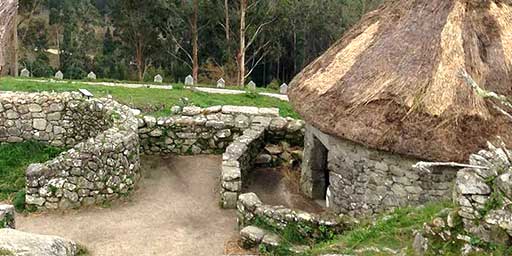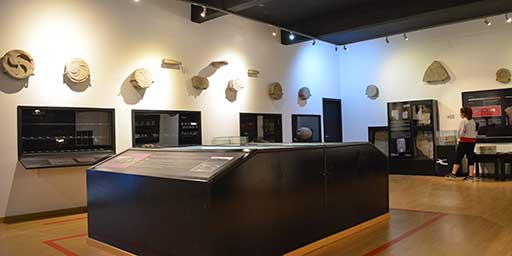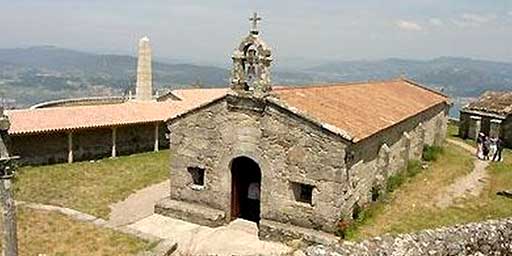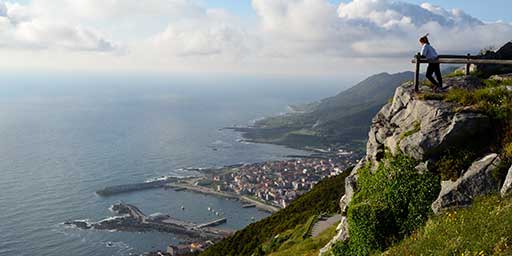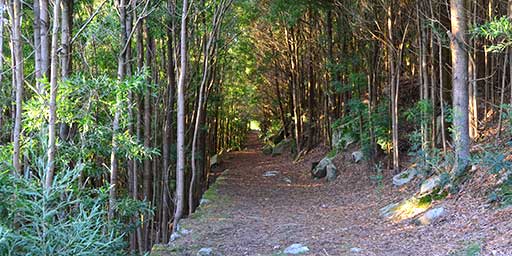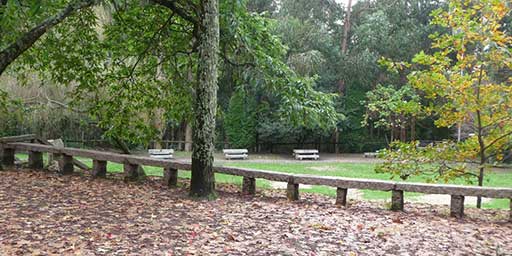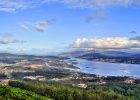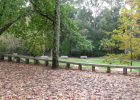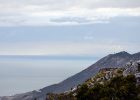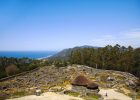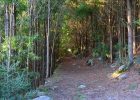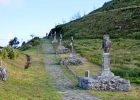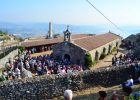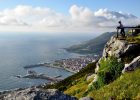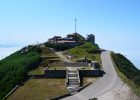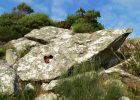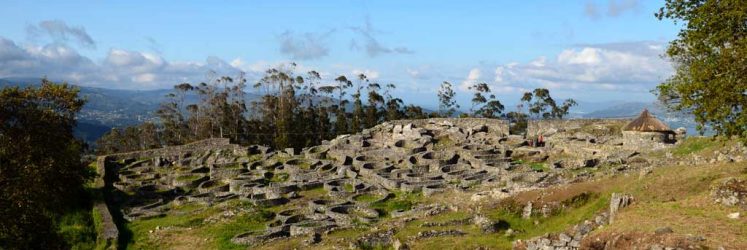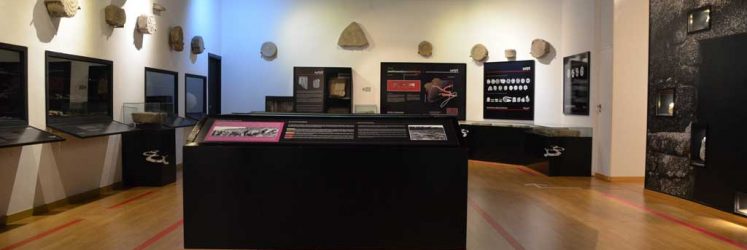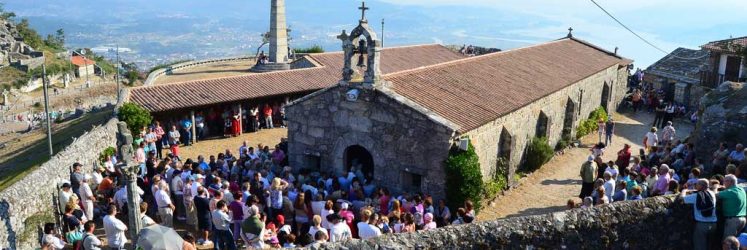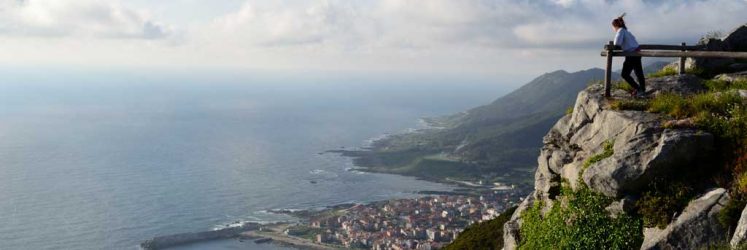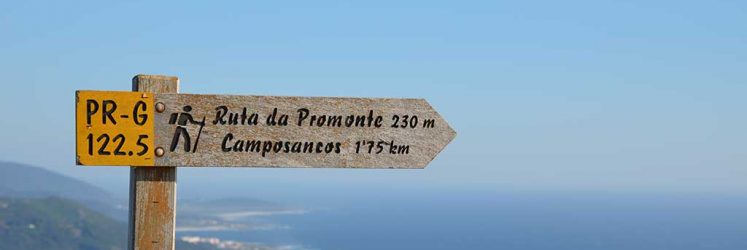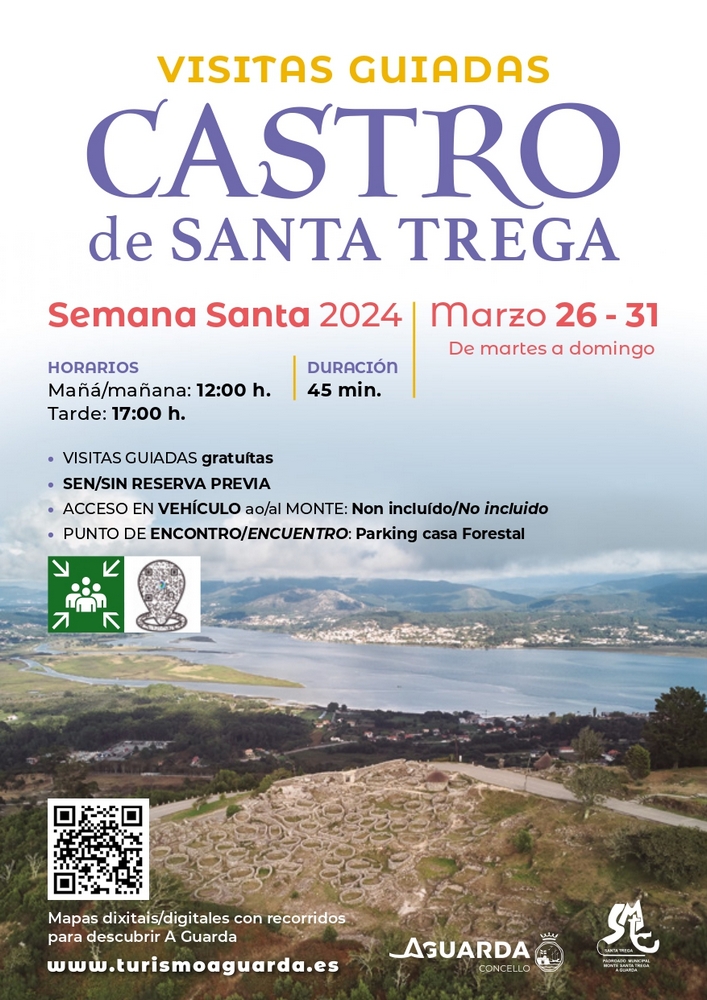Settlement
INTRODUCTION
A Guarda is one of the most important touristic locations in Galicia, mainly due to the Santa Trega mountain, a must to visit spot by its enjoyable values such as its archaeological, religious and landscaping heritage. The citania (“village”) of Santa Trega is considered one of the most important examples of the Castrexo-roman Culture of the Northwest of Spain. The religious legacy becomes materialised with the Via Crucis, the San Francisco cruceiro (“stone cross”) and the Santa Trega hermitage. The mountain has two peaks, called O Facho and San Francisco, offering fantastic panoramic views of the mouth of the Miño River, Portugal, The Atlantic Ocean and the O Rosal Valley.
CITANIA (settlement) OF SANTA TREGA
The most significant archaeological site occupies a 20 hectares area, of which only a small part of it has been dug. The documented origins are from the 4th-century b.C.; it reached its most crucial development in the changing era. In the peninsula of the Trega, an indeed city was developed, with a population of between 3000 and 5000 inhabitants, where the Mediterranean and Atlantic cultures were meeting. The Society Pro Monte, founded in 1912 thanks to the interest of the indianos (“returned emigrants”) from A Guarda, undertook the first archaeological excavation campaigns on which participate Ignacio Calvo, Cayetano Mergelina, Manuel Fernández and De la Peña Santos successively. At the beginning of 2016, ends the last one, Rafael Rodriguez led it and funded by the Deputation of Pontevedra and the Spanish Ministry of Development. It consisted in dig again the already studied area between 1928-1933 by the archaeologist of the University of Valladolid, Cayetano Mergelina y Luna.
MASAT
The Archeological Museum of Sta. Trega (MASAT) housed in a building that was designed to be a restaurant by the architect from O Porriño, Antonio Palacios. By popular acclaim, the Society Pro Monte bought and adapted the building and was inaugurated as Museum in 1953, displaying all of the archaeological remains that were been warehoused in a local at the downtown of A Guarda until that moment. The MASAT displays a complete collection of stone carvings with triskelions and swastikas, Roman coins, ceramic objects, glass… and like singular pieces stand out superb terminals of a torque decorated with delicate filigree and the Cabezón (“big head”) of the Trega, the more emblematic found of the recent excavation works.
HERMITAGE OF SANTA TREGA
At the San Francisco peak is placed the Santa Trega hermitage. Possibly the nun Egeria after to come back of her pilgrimage to Orient, encouraged the devotion for Saint Thecla to the Baixo Miño hermits at the High Middle Ages. Although we have already recorded the existence of a hermitage in this location since the 12th century, it was with the renovations and enlargements at the 16th and 17th centuries that attained its current appearance. The archaeological excavations made in 1994 led to the discovery of several Visigoth’s sepulchres that showed the religiosity of the place.
CROSSES & CRUCEIRO (stone cross)
Various religious festivities are celebrating along the year as a sign of the critical religious tradition and the worship of the martyr from Iconium. Such as the romeria (in which the families spend the day together in the mountain with a typical meal) on September 23rd in her honour or the hundred-year-old procession of Voto, that takes place on the last Saturday of August. On the march, the devotees go through the stations of the modern Via Crucis (Way of the Cross), a Vincent Mengual’s work, a sculptor from Valencia, that replaced the previous one that made in a more plain style. In front of the hermitage rises a 16th-century cruceiro (stone cross), dedicated to San Francisco, that remembers the presence of the order in A Insua, the small Portuguese island just at the confluence of the river and the sea.
LANDSCAPES
Santa Trega mountain raises as an excellent natural scenic overlook with breathtaking and magnificent views of the Miño River Estuary, Portugal, the O Rosal valley and the Atlantic ocean. Along the ascent of the mountain different viewing points allow discovering the environment in detail. Two summits stand out at the top of the mountain: O Facho, a peak with 328 metres height that offers a broad panoramic above the O Rosal valley, the downtown and the fishing port of A Guarda. In the past a fire (facho) was set alight in the nights to indicate to the near settlements there was no danger, with a second fire they informed the presence of sea intruders. San Francisco peak is the highest point of the mountain with 341 meters height; it shows superb panoramic views, its name refers to the orientation looking to the mouth of the river and the small island A Insua, where Franciscan monks lived. In this peak, there is the car and bus parking, the hotel, the Santa Trega chapel, the MASAT and a petroglyph in the highest zone.
FOOTPATHS OF THE TREGA
A network of nature trails mainly paved and marked paths such as the hiking route “PR-G 122 Camiños do Trega” allow to know in depth the Santa Trega Mountain. There are seven different footpaths which sometimes cross, together make a total distance of 7 kilometres. Those trails allow to enjoying the resources and values which the mountain hides calmly.
GUIDED TOURS
The different regular guided visits offered by the Patronato of the Santa Trega Mountain (municipal) provide to our visitors the opportunity to find out in detail the heritage, both the built and the intangible, that the mountain keeps hidden. These are free tours but you need booking. The timetables and lengths change depending on the season. Besides the regular visits, it is possible to book guided tours at masat@aguarda.es for groups (minimum 12 pax), the price for the arranged group visits is 5 € per adult and 3 € per student (It includes the access rate).









